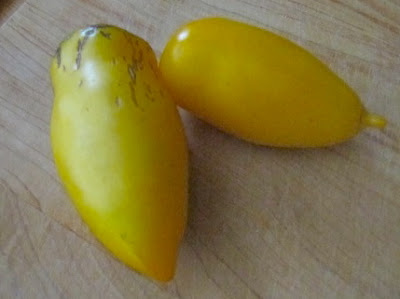 |
| Early morning in a Ugandan tea field |
Farmers can choose among many different ways of certifying their crops. In the past, I have discussed well-known certifications, including Organic and Fair-trade, as well as less well-known ones, such as Certified Local Sustainable. One that I have not described is the Rainforest Alliance certification. To do so, I brought in an expert!
 |
| Denis Twinamatsiko |
Our expert is Denis Twinamatsiko who is currently working with Rainforest Alliance certification programs in Uganda. To help me here, Denis has kindly answered some questions regarding this certification process in the Ugandan context (all quotations and photographs are Denis's).
How and why did you get involved with Rainforest Alliance in Uganda?
Denis told me he became involved with Rainforest Alliance certification through his work with black tea crops in Uganda. His firm works with six tea estates (and over 400 smallholder farmers) along the legendary Rwenzori mountain ranges.
Denis explained that although his firm met multiple food safety and environmental standards, they chose Rainforest Alliance certification to improve overall sustainability in the tea estates.
“We have been re-energized by a recent report released by International Center for Tropical Agriculture (CIAT) titled “Future Climate Scenarios for Uganda’s Tea Growing Areas”, which revealed that climatic suitability of much of Uganda’s tea growing areas will decline significantly by 2050 and hence a wakeup call for everyone involved in the tea sector here in Uganda.”
 |
| Tea tasting |
What makes the Rainforest Alliance Certification different from other Certifications, such as Organic?
Denis explained that Rainforest Alliance considers economic, environmental, and social issues, whereas organic certifications strictly address environmental concerns. While organic certification prohibits the any use of agrochemicals, Rainforest Alliance allows farmers to use a limited amount of agrochemicals in a controlled manner. At the same time, Rainforest Alliance requires farmers to engage in ecosystem, water, and wildlife conservation, to create an agriculture-ecosystem continuum across landscape (for a list of all the requirements click here). In addition, Rainforest Alliance requires that farms provide fair wages and safe working conditions for their farmers. So, although the Rainforest Alliance certification may not be 100% organic, its farming standards take into account people and wildlife too.
 |
| Forest patch next to tea factory |
In your experience, how has this certification brought positive change to farmers and farms in your region?
Rainforest Alliance certified crops appear to be a win-win situation for farmers and the environment. Denis shared that certified farmers maintain patches of natural forests within the tea estates. Keeping forests in the tea-landscape helps farmers lower agriculture costs because they become less reliant on fertilizers or pesticides and more reliant on natural ecosystem processes for crop-care. For example, forests are sources of natural predators (meaning they will need less chemical pesticides) and forests can help maintain soil health and prevent erosion. At the same time, when farmers keep forest patches within tea estates it is one form of conserving biodiversity. Tourists have recognized that Rainforest Alliance tea estates are important for biodiversity conservation, Denis shared, and they are visiting these estates to observe the fauna that can be found there!
Denis made another important point. When farms become certified, farmers start documentation of the process as a form of an internal control system; farmers can use these records to help predict long-term tea production patterns and this can benefit their business.
I was surprised to learn that Rainforest Alliance is not just important locally, but international tea buyers are showing a preference for Rainforest Alliance Certified Teas, and offering higher prices for them. Denis explained that “Lipton, one of the largest tea buyers in the world has committed to sourcing all of their tea from Rainforest Alliance Certified estates by 2015”.
 |
| Tea field next to forest patch |
In light of the positive aspects of this certification, why aren’t all Ugandan tea estates becoming certified?
Denis mentioned that owners of tea estates can be reluctant to become certified because they would need to provide workers with fair wages. In Uganda, for example, there is no national minimum wage, and some farms may prefer to keep underpaying their workers.
Government support for environmental and social well-being is very important to gain wider acceptance of Rainforest Alliance, says Denis. He explained that without national standards people may be less willing to learn about or even adopt the sustainable practices. For example, Uganda does not have a national soil-conservation policy. Thus, many farmers prefer to burn a patch of land to clear it for agriculture rather than try some of the integrated soil management techniques proposed by Rainforest Alliance.
Denis’s work reminds us that even the simple things in life, such as tea drinking, have direct impacts on how the landscape looks, and, more importantly, how it will look in years to come. Denis said it best when he recalled the African proverb, “one generation plants a tree – the next generation enjoys the shade”.
 |
| Tea field |

































